
Get plugged in…


KBS Tour-V Iron Shaft Review
- on April 29, 2016
50 Words or Less
The KBS Tour-V iron shaft is designed to be a lighter weight shaft with a mid-trajectory, low spin, and a tight shot dispersion.

Introduction
After riding on the success of the C-Taper and Tour shafts, it was time for KBS to introduce a new option designed to be the best of both worlds. KBS’s Tour-V was designed to be a shaft that was lighter in weight , but had a stable tip section with less spin which ultimately results in a tighter shot dispersion . This review will dive into how well KBS executed on this goal.

If you didn’t know any better, you would look at the KBS Tour-V and think it was any other KBS shaft (except the C-Taper). It’s a basic chrome steel shaft with traditional steps in it and has the signature inconspicuous red and black KBS shaft label. To the naked eye, the only difference is that the shaft label says Tour-V on it under the KBS logo. If you want a traditional looking steel shaft in your irons, the Tour-V definitely fits the bill.

It’s important to open this section with our signature “every golfer will have a different experience with different equipment.” Personally, I think the KBS C-Taper has some of the best feel and response in steel golf shafts, but the KBS Tour-V feels like the other end of the spectrum for me. Don’t get me wrong, it doesn’t feel bad, but it doesn’t have the same response and feel that I love about the C-Taper. The Tour-V tends to feel a little stout much like the Tour-V wedge shaft and otherwise a little empty. I often found myself unsure what kind of shot I had just hit until I looked up at the ball.

Performance
When you have feel issues in golf, you’re more often than not going to have performance issues. The hallmark of the KBS Tour-V shaft is supposed to be an end result of tighter shot dispersion, but the lack of feel made it tough for me to groove the club to get that tight dispersion. That said, when I was hitting it well, I was getting a good trajectory with more draw than usual and definitely low spin . My biggest problem was that I had difficulty knowing when I was hitting that shot or a shot that sort of fizzled out short and didn’t draw. When I was hitting good shots, that little bit of higher trajectory gave me about eight more yards in distance, plus the rollout from the lower spin. The Tour-V definitely has potential for a few extra yards if you’re a good fit for the shaft in your irons.

After testing the KBS Tour-V shaft, I have to say that I generally agree with the claims made by KBS. As always, I strongly encourage you to get properly fit and test the Tour-V shafts before throwing them into your gamers to make sure they deliver in the way you need them to. You want to be sure that they not only give you the shape and distance you want, but also the control and accuracy you need.

KBS-Tour-V-1

KBS-Tour-V-2

KBS-Tour-V-3

KBS-Tour-V-4

KBS-Tour-V-5

KBS-Tour-V-6

KBS-Tour-V-7
Recent posts.
- Puma Ignite PWRADAPT Golf Shoes Review - March 22, 2018
- TaylorMade M3 Driver Review - March 14, 2018
- TaylorMade M4 Driver Review - March 5, 2018

11 Comments
It’s interesting in totally the other way around. I can’t get a feeling with the c taper shafts and it feels really harsh, but I love the tour v. As you say it’s all about fitting
You do not mention what stiffness you used. I too, have noticed that the shafts can be “hot”every once in a while and go extra far and tend to over draw. Glad to know it was just not me. I am tinkering with the 120x flex. Guessing you tested extra stiff as well? Can you provide more info on that?
Are you using C-tapers right now? I currently use PX 6.0 and they are very playable to me. I dropped sensicores in them and they feel much better. Looking for a shaft that is smooth, workable (but not a lot), no distance loss etc. Pretty much described my 6.0’s but as I get older would be nice to have all of that plus a few extra yards to offset a declining sspeed. Was hoping the V’s or maybe the new LZ’s can do that. Any suggestions?
If you look in the pictures, they were stiff flex. I also didn’t say they were necessarily “hot” or “over drawing.” My point was they were an easy draw for me and that flight with the lack of spin resulted in a few extra yards for me when I hit them consistently well.
I do not play C-Tapers at this time. In regards to the suggestion you’re looking for, it’s very difficult for me to advise. Much of what you are looking for is subjective and will be best determined through a proper fitting. It’s well worth the investment.
Good luck in your shaft choice.
What’s the difference between the kbs tour v from the kbs tour v 110?
I’m not familiar with the 110, and it doesn’t appear on the KBS web site. It’s possible that it’s a variant of the Tour V made specifically for a certain OEMs irons.
The “Tour V 110” is the stiff flex that you tested. It literally says 110 on the shaft. The 110 on the shaft is the weight of the shaft. Are you sure you even tested these?? It also says 110 on the shaft in your pictures. Shouldn’t have been that hard to put two and two together. If you weren’t in such a hurry to tell someone to get fitted with attitude you might have noticed.
Golf Clown,
Perhaps if you weren’t in such a hurry to leave a “gotcha” comment, you’d have noticed that I didn’t write this review, Bill Bush did. He no longer writes for Plugged In Golf, but I try to offer answers to “his” questions where I can.
Got eeem! 😱 Golf Clown with the L 🤡
I got fitted with the KBSV 100s, and I noticed my accuracy and dispersion improved twofold. I love them I’m at 10 handicap 57 years old.
Kbs tour or kbs tour v ??, which would you recommend??
It depends on the player and what they’re looking for.
Leave a Comment Cancel
Your email address will not be published. Required fields are marked *
Email Address
Save my name, email, and website in this browser for the next time I comment.

- Golf News – November 6, 2024
- Sun Mountain C-130 Hybrid Golf Bag Review
- Alternatives to a Break from Golf
- Callaway Apex Ti Fusion Irons Review
- Merrell Moab Speed 2 GORE-TEX Shoe Review

Contact Us Advertise Subscribe Privacy Policy

Advertise on this site.
Plugged In Golf

Do You Like Free Golf Gear?
Sign up for our weekly newsletter and not only will you get the latest reviews, instruction, and more delivered directly to your inbox, you’ll also be entered into regular giveaways for golf clubs and more.

KBS Tour-V Iron Shaft Review
Kbs tour-v iron shaft.
KBS shafts are long known for their exceptional feel and quality performance, but like most shaft companies, the world of modern club fitting and technology has caused them to offer a wider range of options to fit different swing types. With the original KBS Tour iron shaft as their starting point, KBS set out to make a lighter-weight shaft with less spin and a firm feel . The end result is the KBS Tour-V iron shaft.
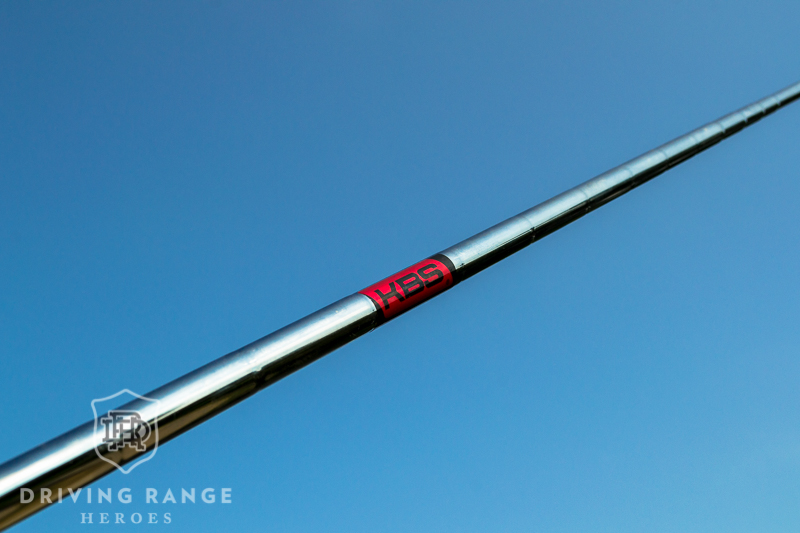
How Does it Feel?
If you expect the KBS Tour-V to feel much like the classic KBS Tour shaft, you should reset your expectations. To firm up the tip section for lower spin, KBS made the “outer diameter” of the shaft bigger which gives a more firm feel. KBS also raised the center of gravity to a higher position to raise the Tour-V’s balance point. The end result is a firm, crisp shaft with that signature KBS smoothness and response you know from the standard Tour. I will warn you though. If you don’t have the swing for the Tour-V, the shaft may feel too firm and you may struggle to make a good contact. If you’re a good match, the Tour-V is super crisp and easy to control.
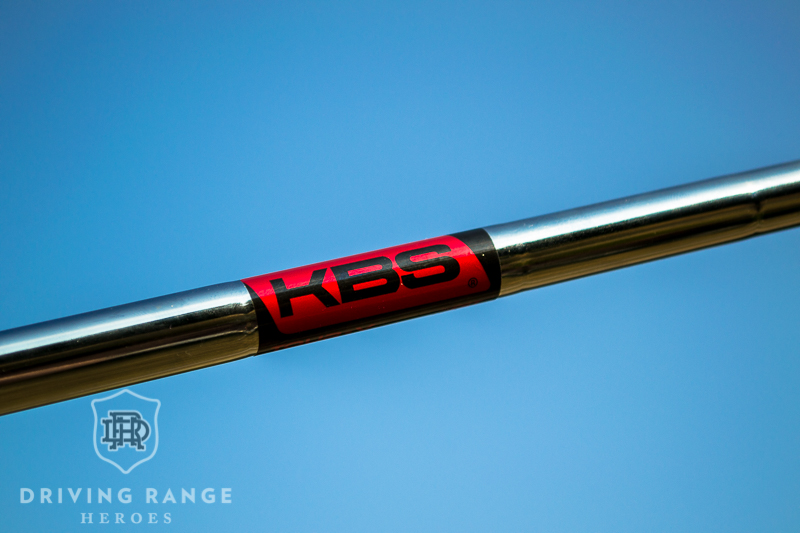
On-Course Performance
Like I mentioned before, the KBS Tour-V is designed to be a lightweight, firm feeling, low spin shaft. Typically that’s a formula for lower launch as well. On the KBS shaft chart (you can find that here ), the Tour-V is listed just shy of mid launch and super low spin. This is perfect proof of why fitting is so important. After reviewing my data, I definitely experienced mid-launch results. Where my experience was different was that I didn’t really hit super low-spin shots. Yes, I did have some notably lower spinning shots, but my swing didn’t necessarily translate into lower spin. That said, it was easy to tell that the right swing would very likely have the lower spin they’re looking for. (My numbers were more in the mid-spin range.)
Another characteristic KBS touts for the Tour-V is “tight shot dispersion.” Tight dispersion is a perfect description of the Tour-V. In fact, I would say the tight dispersion of the Tour-V is the most impressive performance trait. The KBS Tour-V is very easy to control and set on your target. Again, if you have the swing for it, the Tour-V is going to be a great pin seeker.
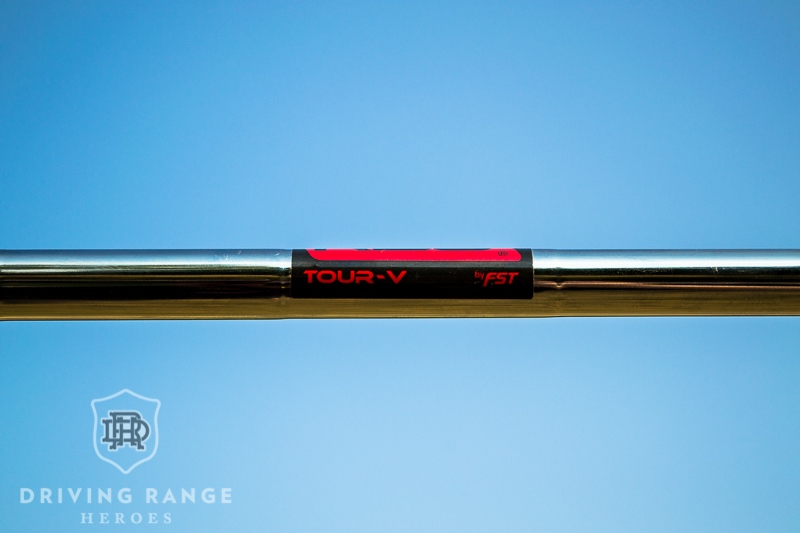
Final Thoughts – KBS Tour V Shafts
Powerful players that need a firm shaft in their irons will benefit from the KBS Tour-V shaft. While the Tour-V is not as firm or stout as the C-Taper , similar players will fit into the profile. The biggest difference between the two is that the Tour-V will launch a little higher than the C-Taper. If you’re the kind of iron player that can load a shaft and likes to “shoot darts,” then I would definitely put the Tour-V on your radar.
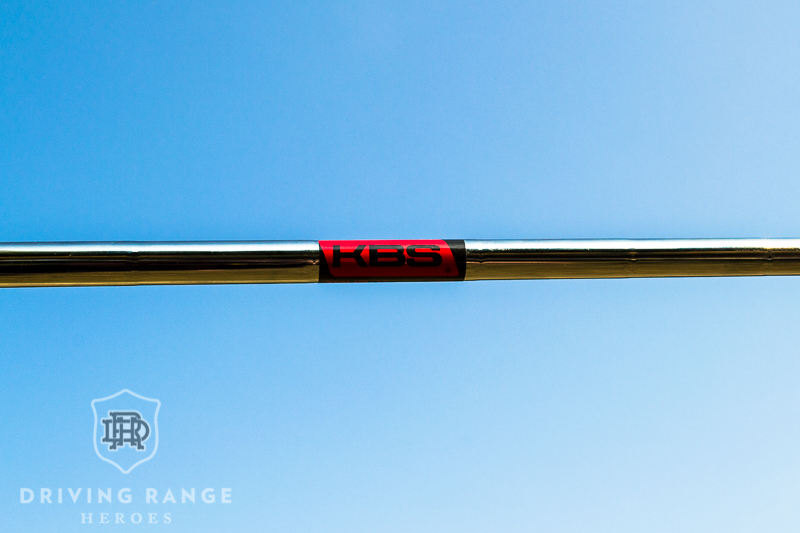
Related Posts:
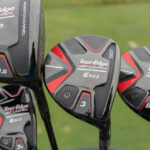
I’m a 69 year old male I have been playing since I was 10. Iam looking at a new set of irons old set is 20 years old I have dynamic gold s300 in my clubs now would the kbs tour v90 shafts r flex be to light of a shaft. I’m looking for something I can play for awhile. I use to hit my 7iron 150 yards now maybe closer to 135 yds. Should I try the kbs tour v90 shafts or go with something a little heavier
Lighter shafts will in theory make it easier to launch the ball and just swing the club. It is not uncommon for a “seasoned veteran” players to switch to lighter shafts in later years.
Tour V is pretty stout, even at its lighter weight.
Aside from the notes I mentioned here, it really comes down to what feels good in your hands, how you physically swing the new club, and what the results are. Only you will be able to answer that.
Leave a Comment Cancel
Your email address will not be published. Required fields are marked *
Email Address *
Save my name, email, and website in this browser for the next time I comment.
Popular Posts


KBS Tour V Shaft Review – Specs, Flex, Weight
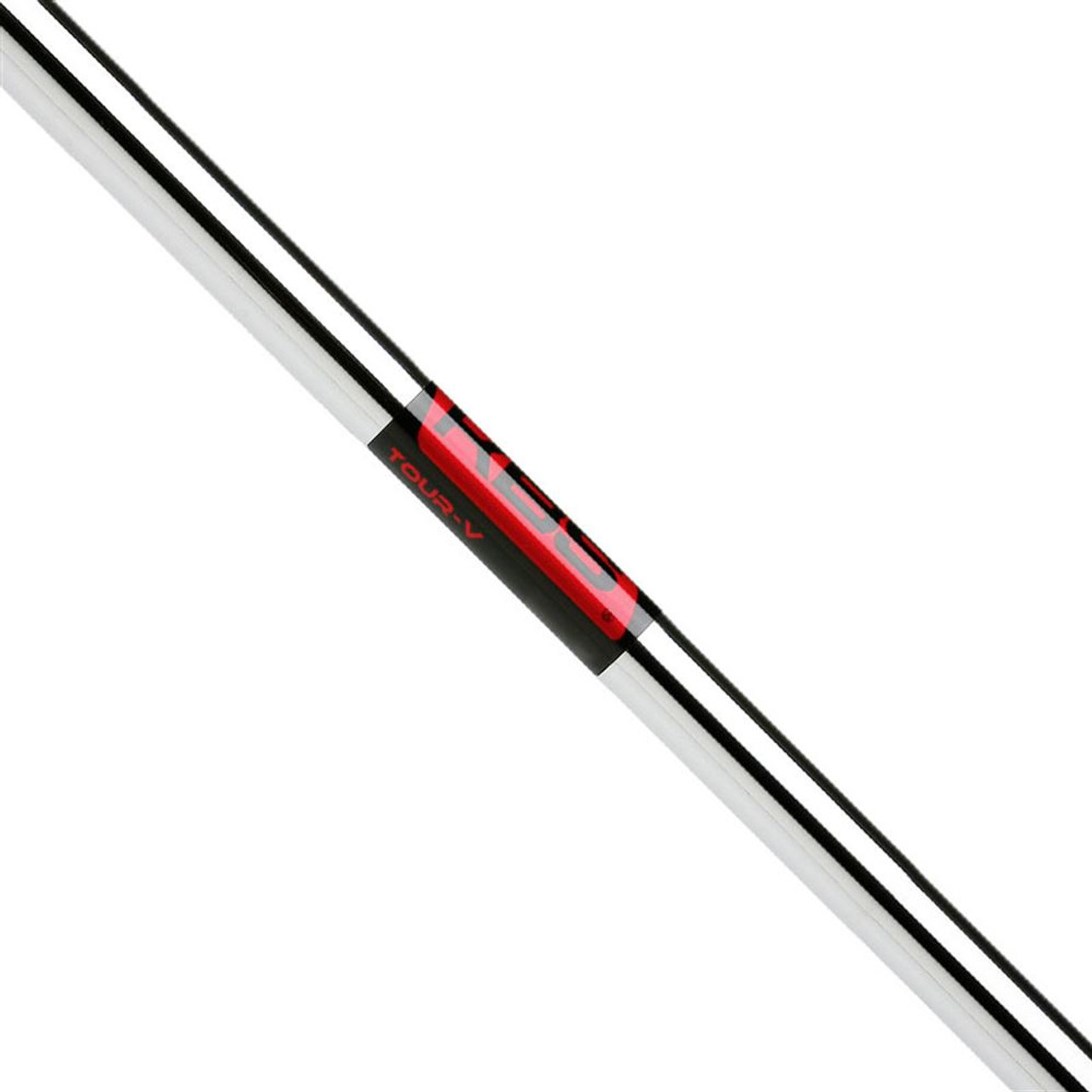
If you were a fan of the KBS Tour shafts but found them to be a bit too heavy or too stout for your swing then the KBS Tour V shaft should definitely be on your radar.
The KBS Tour V was specifically designed to perform as close as the KBS Tour shafts as possible while at the same time being lighter.
The KBS Tour V promises tight shot dispersion through muted spin and of course, the classic feel and performance of the original KBS Tour shafts. So does it deliver? Find out in the following review!
KBS Tour V Shaft Overview
The aesthetics of the KBS Tour V shaft is very on-brand for the company.
You get the almost obligatory polished chrome finish with the red band in the middle containing all the lettering. And like most KBS shafts, the KBS Tour V is a stepped steel shaft. So the looks aren’t anything special; but they will certainly appeal to you if you prefer the look of a traditional iron shaft.
Overall the feel of the KBS Tour V is more muted than the KBS Tour. There isn’t as much response in it. That doesn’t mean it feels stout. In fact, the KBS Tour V shaft feels much more manageable than the KBS Tour. But there is certainly a lack of feedback in it. The kick point is very hard to suss out unless you take a powerful swing. Then, you can feel it just under the grip.
Still, the transition is very smooth. You can barely feel the shaft release; but you know it’s happening because you get really good ball and club head speed with this shaft. Of course, a lot of the enhanced club head/ball speed will depend on how you swing your irons. For our testing group though, the numbers told the story. Almost all of us were seeing increases over our typical ball/club head speed numbers. The proof is in the pudding as they say.
In the end, we would say that the KBS Tour V favors a more aggressive tempo but it still plays nice with a more deliberate tempo as well. In both cases, you are likely to achieve a nice arcing draw and increased carry and rollout.
Why is the KBS Tour V So Popular?
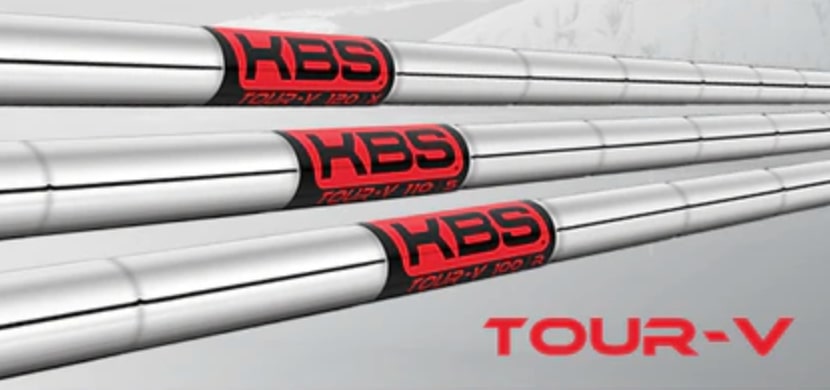
The KBS Tour V owes a lot of its popularity to the original KBS Tour shaft and the KBS C-Taper shafts.
These are actually more popular than the KBS Tour V; but their success has prompted a lot of people to take a look at the lighter KBS Tour V.
How Does the KBS Tour V Perform?
After our test session, we concluded that the most beneficial thing about the KBS Tour V is distance.
Yes, we were increasing our ball and club head speed with this shaft and yes, that meant better carry. But there are a couple of other dynamics at play here. First of all, the KBS Tour V absolutely delivers on its promise of low spin. Sidespin is muted marvelously so that you get tighter dispersion and good rollout distance.
Secondly, the KBS Tour V is advertised as a mid launching shaft but we saw mostly high-arcing shots in our test session. The higher launch gave most of our testers better overall carry. So when you combine higher launch, muted sidespin and good rollout, you end up with an iron shaft that plays pretty long.
Of course, there is always the concern that low spin will produce too much rollout and that was certainly on our mind during testing. And in fact, some of us did roll off the green and into the weeds. But if you want to limit the amount of irons you need to get greenside, the KBS Tour V is at least worth a look.
KBS Tour V Shaft Specs
What flexes are available what swing speeds do they suit.
Regular flex is available for players in the 80-85 MPH swing speed category.
Stiff is a good choice for 86-90 MPH swingers and extra stiff would suit players in the 91-105 MPH range.
What Weights Are Available? What Swing Speeds Do They Suit?
The 100g version is good for players in the 80-90 MPH range.
The 110g version may suit 91-95 MPH swingers and the 120g version would be good for players in the 96-105 swing speed spectrum.
Why is it So Good?
The KBS Tour V is a good shaft because it allows players with less aggressive tempos to get the distance help they need on the fairway.
KBS Tour V First Impressions

Our first impression was that the KBS Tour V looked like any other KBS shaft.
But when we swung it, we could feel that it actually had less feedback.
Key Features & Performance
The KBS Tour V features large outer diameters and a stiff tip in order to reduce side spin and enhance stability on full swings.
KBS Tour V Irons Review
Like almost all KBS shafts, the KBS Tour V are very stable and accurate – even on your full swings with the long irons. Dispersion is tight as promised and distance is outstanding.
KBS Tour V Wedges Review
The KBS Tour V wasn’t as great in our wedges. The lack of spin made it hard to stay on fast, elevated greens.

KBS Tour V Pros & Cons
- Very accurate
- Good for moderate and fast tempos
- Feels stable on full swings
- Great distance
- Classic KBS looks
- Limited feedback
Overall Score: 95/100
Check out more reviews here:.
Who Should Buy it?
Muted spin? Check! Tight dispersion? Check! Classic KBS feel? Not so much.
The lack of clear feedback was our biggest gripe about this shaft. Some players may also have issues with excessive rollout. Nevertheless, the KBS Tour V is a great distance iron shaft and it is as accurate as promised.

Project X Cypher Shaft Vs Riptide Even Flow Comparison
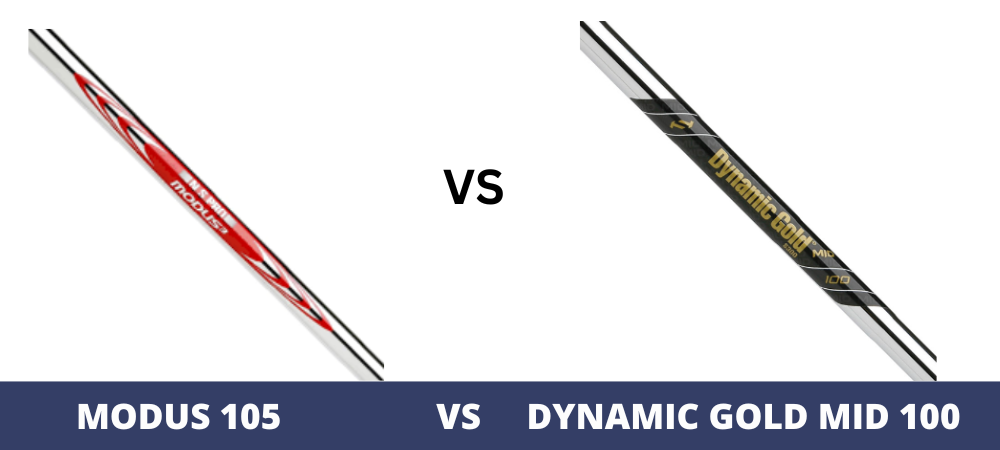
Nippon Modus 105 Vs Dynamic Gold Mid 100 Shaft Comparison
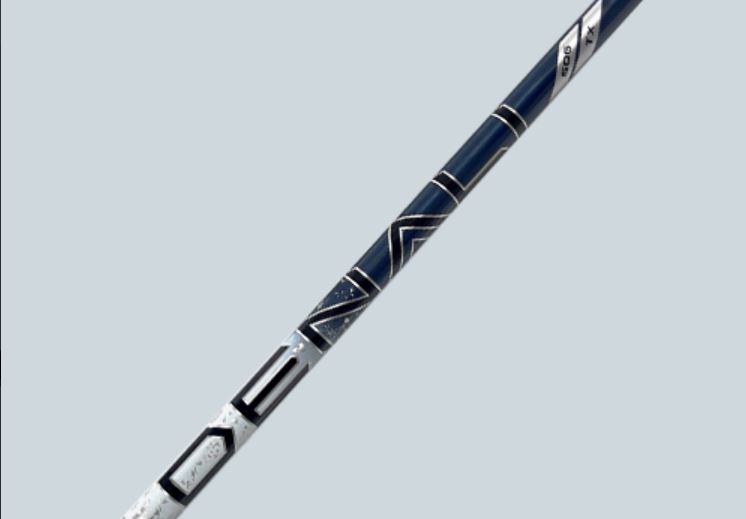
Project X Denali Blue 60TX Shaft Review - Specs, Flex, Weight
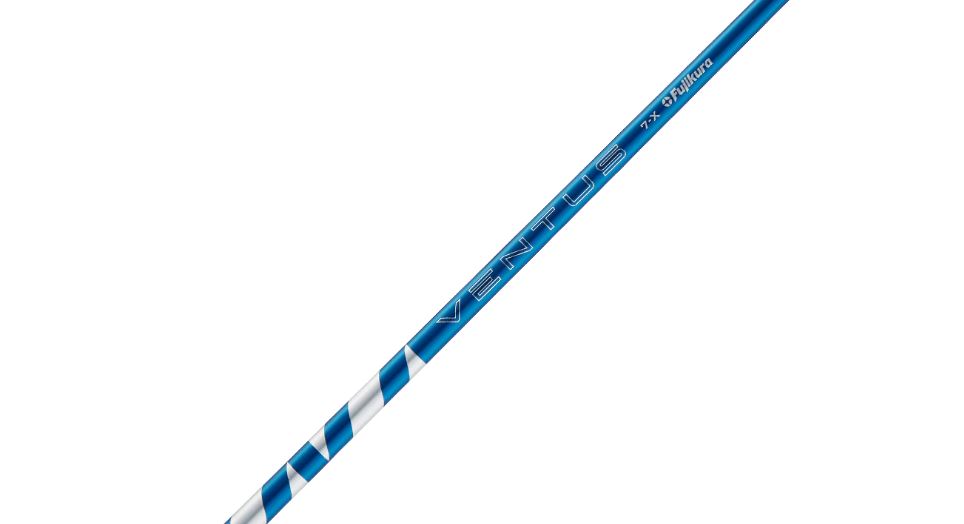
Fujikura 2024 Ventus Blue Shaft Review - Specs, Flex, Weight
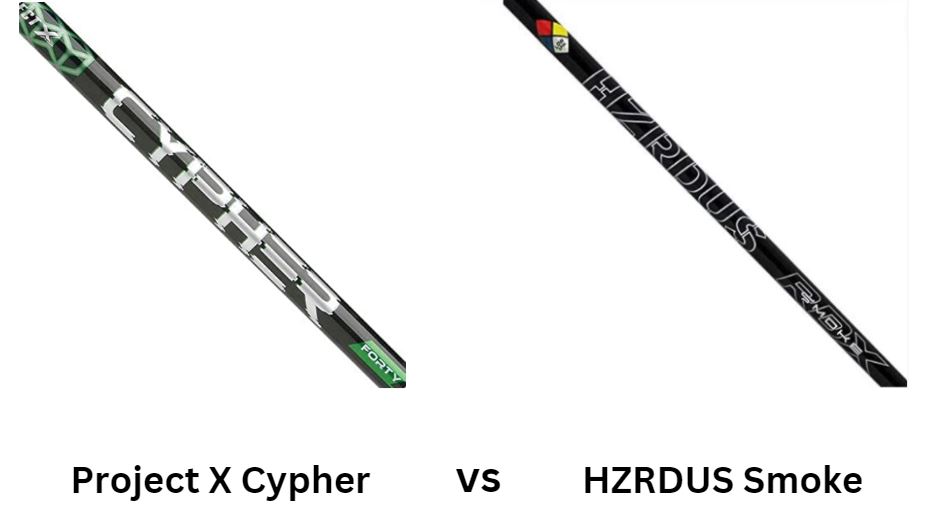
Project X Cypher Vs HZRDUS Smoke Shaft Comparison
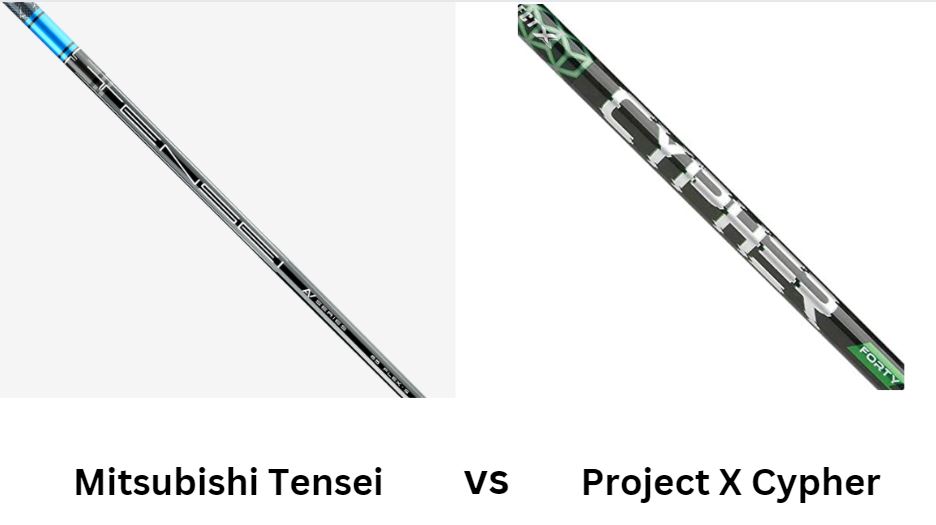
Mitsubishi Tensei Vs Project X Cypher Shaft Comparison

Tour AD DI Hybrid Shaft Review - Specs, Flex, Weight
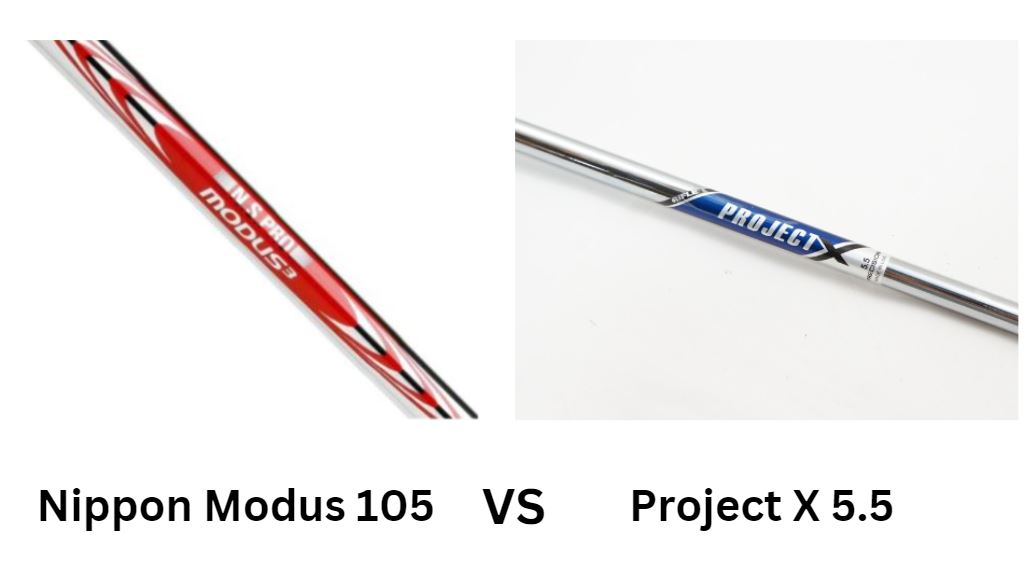
Nippon Modus 105 Vs Project X 5.5 Shaft Comparison
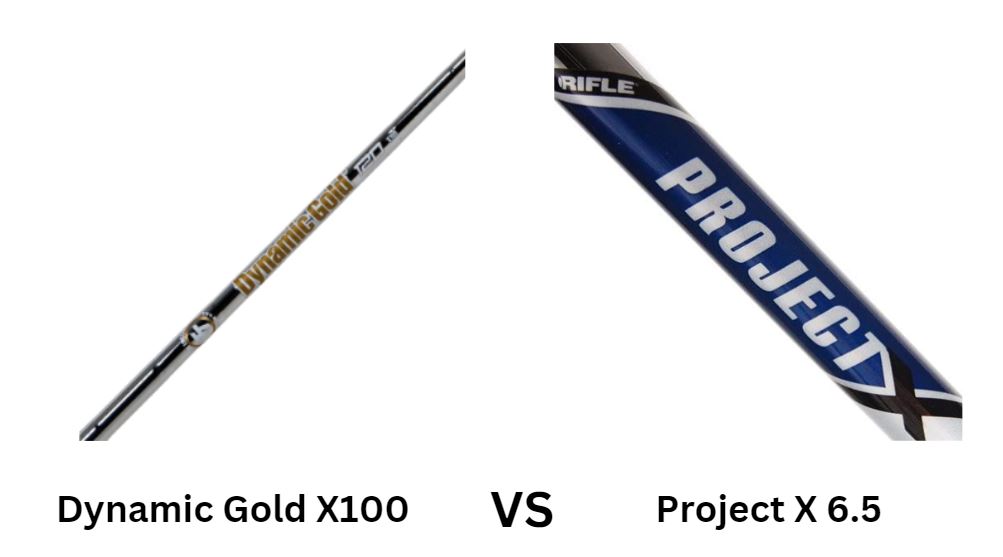
Dynamic Gold X100 Vs Project X 6.5 Shaft Comparison
© 2022 Amazon Associates Program. Golf Blue Heron is a participant in the Amazon Services LLC Associates Program, an affiliate advertising program designed to provide a means for sites to earn advertising fees by advertising and linking to Amazon.com. *Amazon and the Amazon logo are trademarks of Amazon.com, Inc., or its affiliates.
- Best Golf Products
- Garmin s60 vs Garmin s40 vs Garmin s20
- Golf Driver Comparisons
- Golf Iron Comparisons
- Home Of Golf
- Putt-A-Bout Indoor Putting Mat Review
Which KBS iron shaft is best for you?
Last updated: 21 October 2024
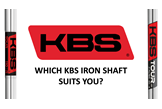
KBS iron shafts are for everyone from the world’s best golfers to slow-swinging amateurs, but which of their 14 models best suits you? Let us explain…
Golfers rarely give a second thought to which shafts are in a new set of irons . Yet, KBS believe 14 different models (all of which come in numerous weights and flexes) are needed to cover all types of players.
Technology has taught the brains behind KBS – Kim Braly, if he’s to fit hard-hitting tour pros alongside moderate speed, high handicap amateurs the brand needs a vast array of options. The thinking has led to the creation of 14 different steel and graphite KBS iron models.
EXPLAINED: How we test golf equipment
We don’t want to fit you for your perfect iron shaft. That should only ever be done with the help of a decent club fitter in the real world. But, to highlight how shaft technology helps you hit better iron shots more often we’ve taken a look at the full KBS line-up.
When buying your next set remember KBS shafts can change how a shaft feels, launches and spins, so you have the opportunity to choose your perfect ball flight and set-up. Here’s what you need to know about KBS iron shafts.
Players’ models
Kbs c-taper iron shaft.
There are three-pillar players’ shafts within the KBS line-up and each differs by balance point. The Tour is stiffest in the grip section (for good feel) and it gives mid-launch and mid-spin. The C-Taper is stiffest in the tip section (close to the head) to give a stout and strong feel and deliver low launch with low spin. The S-Taper fits neatly between the pair.

C stands for Constant Taper, so the shaft has no steps, which allows the C-Taper to have a strong and stout feel. Typically the model suits stronger golfers, and players can expect a 5% lower ball flight than True Temper’s Dynamic Gold . Major winners Gary Woodland and Justin Rose have played the C-Taper as has Rickie Fowler .
KBS $-Taper iron shaft
All three KBS pillar players’ iron shafts come in the same five weights, so golfers get to choose based on the launch, spin, and ball flight desired for their own game.

Half flexes (R+ and S+) are brilliant for golfers that sit on the fence between two flexes. They alleviate decisions around whether to go regular flex for more distance or stiff for increased accuracy. The S-Taper (Subtle Taper) is midway between the C-Taper (lowest spin and launch) and Tour shaft (mid-spin and launch).
KBS Tour iron shaft
The Tour is Kim Braly’s signature shaft, it was the first KBS model and it’s the mothership of KBS. Thanks to not being overly strong the Tour can suit a wide audience of golfers. Its consistent step pattern is a good fit for smoother, less aggressive transition players.

Thanks to being a high balance point model (so weight is positioned closer to the grip), golfers get a slightly softer feel and good feedback at the top of the swing. A further Tour FLT (Flighted) shaft model launches long irons higher and short irons lower for a more optimised set.
RELATED: Which Taylo rMade iron suits me ?
How KBS players’ steel shafts differ in launch and spin

KBS Tour V iron shaft
KBS see the Tour V as an outlier shaft because the model is 10g lighter than the C-Taper, $-Taper, and Tour.

KBS Tour Rep Paul Steels says “the Tour V shaft is often a good fit for players who like the shot shape and flight of the C-Taper but want extra feel, as the C-Taper is just so boardy”.
KBS C-Taper Lite, $-Taper Lite, and Tour Lite iron shafts
There’s lots of misunderstanding around lighter iron shafts. But KBS say golfers should see their Lite models (which are 15g lighter than the standard models) as giving a little more launch and being easier to get airborne (than the 3 pillar models).

For players who don’t go at iron shots full tilt Lite models can be a really good option as club speeds increase and shots launch higher. Lite models and aging typically go hand-in-hand. If you happen to overload the shaft you’ll know because shots will start turning over left of the target (for a right-handed golfer).
Also, think about launch windows. A strong but very low launch player could see benefits by going Lite but in a strong flex to up launch and ball flight.
RELATED: Should you play the KBS TD driver shaft?
KBS iron shaft swing speed recommendations

Average speed KBS iron shaft models
Kbs max and max ct80 iron shafts.
To ensure KBS have shafts to suit every golfer’s speed they produce ultralight Max and Max CT80 shafts as well. Both Max shafts are high-launch, high-spin models which help optimise ball flight for maximum carry distance at moderate speeds.

Remember it’s possible to be a fast but inconsistent high handicapper (in which case you’d be better suited to one of the KBS players’ shaft models), so think about shafts suiting speeds rather than ability. Thanks to their low kick point and high launch properties the Max shafts regularly make an appearance in stronger lofted irons (think TaylorMade Stealth and Callaway Big Bertha B21 ).
Typically high-speed players, irrespective of ability will not touch this product.
RELATED: Which Lamkin grip best suits your game?
There are junior options too
To ensure golfers can go through their whole golfing career with a familiar KBS feel, the brand also produce two junior steel shafts (the 560 and 580). Both are designed to suit the speed of 8 – 11-year-old players.

Both shafts are lightened steel, so the weights are similar to lightweight graphite iron ranges. But, crucially golfers don’t get a heavy head feel which can cause issues when switching from graphite to steel once a child is a stronger teenager.
When should you go graphite?
Graphite irons shafts are massively misunderstood in the modern game. Many people think they’re for older golfers and slower speed players, which just isn’t the case. Graphite irons shafts are easier on the body. They remove vibration, and can suit everyone from tour players to very moderate speed club golfers.
In typical KBS fashion, the brand make three graphite models (all are available in numerous weights and flexes), here’s what you need to know about them.
How KBS graphite iron shafts differ in launch and spin

KBS TGI – Tour Graphite Iron shaft
KBS specifically target a steel-like feel from their graphite shafts. They’ve done such a good job fulfilling their brief several tour players swear it’s not actually graphite. Thinking instead it’s a steel shaft painted black.

The TGI can be matched to golfers’ speeds (there are eight weights, so the model can suit from 57mph to 100mph speed players) in exactly the same way as the brand’s steel shafts. The TGI is the company’s lowest launching and spinning graphite iron shaft, it’s pretty strong and stout, so decent players often like it.
KBS PGI – Players Graphite Iron shaft
In developing their shafts KBS have undertaken masses of research, and they say when the flex isn’t disclosed golfers often prefer the feel of graphite over steel. Their advice is to play the flex you need. Don’t be tempted to go stiffer than necessary. And if you swing a 6-iron at 70mph play a shaft that performs at that speed.

The PGI was developed to bring a steel-like feel to graphite and it’s a step up from the lower launching and spinning TGI. The PGI is widely played on the LPGA Tour, it’s the brand’s mid-launch/mid-spin graphite iron shaft. Six weights mean the model can suit from 57mph to 94mph players.
KBS Max graphite iron shaft
The Max graphite is the highest launching and spinning graphite iron shaft in the KBS line-up. It’s a model for golfers who really need help launching shots high into the air to maximise carry distance. Five weights mean the model can suit swing speeds from 51 to 82mph.

KBS graphite iron shaft swing speed recommendations

Get it right the first time
KBS reckon so long as golfers get fitted correctly the first time they can progress through KBS models throughout their playing career. It means, if like Gary Woodland you’re a C-Taper player or Cameron Smith a Tour shaft player you stay within that family but progress to lighter models as you age.
And to demonstrate how important finding the right family is KBS say to look at Adam Scott and Gary Woodland . Scott has been a Tour shaft player for years (think of his smooth, under-control swing) whereas Woodland is a big strong hitter of the ball, so he’s a C-Taper guy all day long. But, switch their clubs over and both would struggle to play, as they wouldn’t get the ball flight or shot window they’d be expecting.
Don’t forget your wedges
Today KBS are a through-the-bag shaft company. They make shafts for drivers, fairways, hybrids, irons, wedges, and putters, so if you’re taking the time to get fitted don’t neglect how the company produce five different wedges shafts too.

KBS say the Hi-Rev wedge shaft has been designed from the Tour shaft profile. There’s a lengthened tip section to give a softer feel and generate extra spin. If you play the Tour shaft you’ll likely enjoy this wedge model too. The brand’s 610 wedge shaft was designed to complement the Tour V shaft.
Where C-Taper and S-Taper fans often run shafts from their irons through into the wedges, albeit at a slightly lighter weight as wedge shots are rarely hit full out.
Want more information about KBS iron shafts? Visit their website here
How do KBS iron shafts compare in data?

Verdict: KBS iron shafts
Lots of people will look at our test pro’s data and think the shafts are performing very much alike. But the data says nothing about how different the shafts felt.
Comparing the C-Taper and S-Taper the data shows the pair as being pretty evenly matched but the difference in feel was phenomenal. So different in fact our test pro felt he just wouldn’t be able to use the C-Taper effectively on the golf course (as it’s so strong). Where the $-Taper felt brilliant and could well be his perfect match within the KBS family.
The Lite shafts produced a faster ball speed, just as KBS promised and the C-Taper Lite in particular launched and flighted shots higher with a steeper descent angle, so there’s a huge amount of tuning in ball flight and feel available from shafts.
Just as KBS promised the TGI graphite shaft produced some very good optimal numbers too, they’d be a very sensible choice for golfers looking to avoid the shock and vibration of using steel shafts. Equally the Max graphite climbed to its peak height very early in its flight, which at lower speeds will be a real benefit in maximising carry distance.
At the end of the day, KBS are all about the consumer. You get what you want, whether that be higher or lower launching, more or less spin, or a different feel, everything is on offer within the KBS iron family. Our test pro liked the $-Taper for his own game as it didn’t feel too strong, yet it felt stable and produced a good feel through the hands, and he had control over his ball flight.
KBS Founder Kim Braly on a life spend designing golf shafts
Many golfers won’t know the name Kim Braly, but the guy is a shaft legend. He has dedicated his life to creating the highest performance shafts you can buy, and we sat down with him.
How have shafts evolved over the last 150 years?
A hundred of those years were dominated by hickory shafts. Steel shafts didn’t come about until the 1930s. My father patented “Frequency Matching” (in the 1980s) which has been the biggest breakthrough during my lifetime. Until then there were no standards; the method gave a baseline to compare and match shafts. Everything I’ve achieved since is down to the Frequency Matching method he invented.
How did the Frequency Matching idea come about?
We made titanium irons with tungsten weights and wanted to see how different set-ups affected performance. We organised a golf robot, and tried two identical set ups, yet the results were entirely different. We started questioning if shafts might not be matched. My dad developed Frequency Matching as a way to compare and match (for flex, weight, profile through CPM, cycles per minute) shafts to one another. The process hasn’t changed for 30 years.
You developed the Rifle and Project X shafts which are still popular; what was different about them?
No set of shafts had been designed individually for each club until then. They were a breakthrough. We’d follow the PGA Tour (at a time when there were no tour vans) and explain to players about matching their irons. We could match a whole set to the club they felt most comfortable and confident with. We were custom fitting without really knowing it.
I’m also proud of what we’ve achieved at KBS over the last 10-12 years. If we aren’t the leaders in shaft technology I really don’t know who is.

What was the players’ reaction?
They were super interested. We had lines of people wanting to understand how shafts affected performance. We learned all sorts. In relation to frequency the lightest shaft in the bag (the driver) will be the stiffest. The weakest shaft should be in the lob wedge, as there’s lots of shots hit less than full out, and a fraction weaker shaft allows you to know where the head is.
Today, the correct fit for players is often a flex and a half stiffer than we recommended 15 years ago. At the start we were a couple of guys just trying to understand. It wasn’t about marketing; we had our mathematical theory and we wanted to understand if it worked in practice.
How have launch monitors affected modern shaft fittings?
They’re one of the best things to have happened to golf. Launch monitors have helped people understand ball flight, spin, height and launch. Every shaft I’ve ever designed has been designed with a type of player in mind.
Each KBS shaft fits into a matrix, we’ve worked on them one at a time, and the line-up is nearly 100% complete.
Where do you start designing new shafts? Is it an idea from you, or a request from a player?
We have ideas, but they have to work in practice. In golf “feel” is a huge thing. If the feel is wrong products go nowhere. I’ve enjoyed dialling in the KBS Tour Lite (steel) and KBS PGI (Players’ Graphite Iron shaft) to be “everyman” golf shafts over the last two years.
They work at specific swing speed ranges, and thanks to our options we can optimise launch and spin for golfers swinging 6-iron in the region of 80mph.

You’ve worked on a bunch of top performing shafts, but which are you most proud of?
The Precision Rifle put me on the map, set up my career and I learned loads from it. The first KBS Tour shaft was a really big deal, too. It’s the foundation stone of every other KBS shaft, where all our other current shafts start. I’m awfully proud of it.
Have you hit hickory shafts? How different are they to today’s models?
The last two tournaments I’ve played have been hickory challenges. Hickory weighs a ton (they’re 180g in a 6-iron), they’re really stiff but the torque is unreal. You can literally twist the head in your hand. Wood is strong in one direction – the one it’s grown in – which is up and down the shaft.

Will graphite shafts ever be the norm through the bag?
I’ve heard so many times how graphite represents the future. In terms of iron shafts steel is still a great material. The reason graphite became popular is its strength to weight ratio. It’s possible to make a 45in driver shaft at a “normal” swingweight.
You just can’t do that with steel, but you don’t need that as much in irons. Steel isn’t going away.
KBS make 16 different iron shafts; why so many?
Each of our profiles do different things. You may have the tendency to hit the ball low, so we have shafts designed to spin more and have a higher trajectory, and vice-versa.
For every 2.5mph of club speed change golfers need a different shaft flex, and that’s why we make half flexes. There’s also feel to consider. In our KBS Tour franchise we go from 130g to 90g in 5g increments (nine different weights), so golfers get what they need.
Whereas in a traditional three flex line-up (R, S, X) golfers get pushed into the best option available. KBS have a reputation for making good feeling shafts because golfers get shafts with the correct load at impact, which naturally feels good. Everything really does come back to fitting.
READ NEXT: Best 2022 Iron Test
BECOME A TODAY’S GOLFER MEMBER: Unlimited access to premium content and exclusive rewards!


IMAGES
VIDEO
COMMENTS
KBS’s Tour-V was designed to be a shaft that was lighter in weight, but had a stable tip section with less spin which ultimately results in a tighter shot dispersion. This review will dive into how well KBS executed on this goal.
The KBS Tour-V iron shaft is designed to have a firmer feel, low spin, and mid launch. Our review tells you just where it fits int he KBS lineup.
The KBS Tour V promises tight shot dispersion through muted spin and of course, the classic feel and performance of the original KBS Tour shafts. So does it deliver? Find out in the following review!
Just scored a deal on a set of KBS Tour V 125 shafts (Tour spec version) that I simply could not pass up on for the price. Full set of 3-PW shafts. Hoping to get some feedback on how these shafts play.
I currently play the KBS Tour V 125 S+ in my 50*-degree gap wedge and it's definitely a great shaft for full swing clubs, designed to reduce dispersion as much as possible. So long as the ball-strikes are pretty decent off the face, the Tour V 125 S+ plays much like a point-and-shoot sniper rifle, and works as advertised.
KBS see the Tour V as an outlier shaft because the model is 10g lighter than the C-Taper, $-Taper, and Tour. KBS Tour Rep Paul Steels says “the Tour V shaft is often a good fit for players who like the shot shape and flight of the C-Taper but want extra feel, as the C-Taper is just so boardy”.